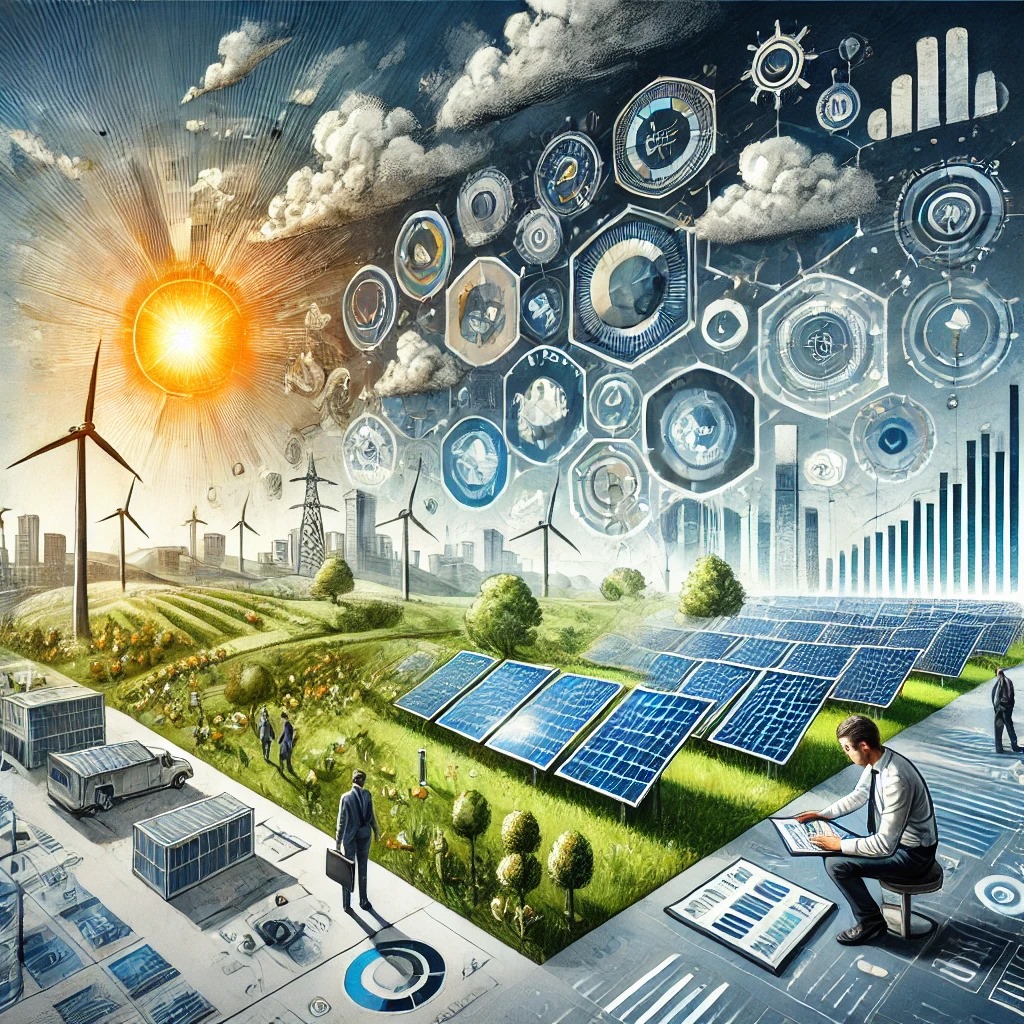Navigating Uncertainty in Photovoltaic (PV) Systems: A Blueprint for Adaptability

As the world transitions to cleaner energy, photovoltaic (PV) systems play a critical role in reducing carbon emissions and achieving sustainability goals. However, designing and operating PV systems involves navigating a landscape of uncertainties—from environmental changes to technological advancements and evolving energy policies. The key to success lies in creating adaptable systems that can evolve with these variables.
Uncertain Factors Impacting PV System Design
- Solar Variability
Solar energy availability can fluctuate due to weather patterns, seasonal changes, and urban developments that might introduce shading. Designing systems to handle these variations ensures stable performance over time. - Technological Advances
With advancements in renewable energy technologies, PV systems must be scalable to accommodate increased demand, such as the growing adoption of electric vehicles (EVs) and renewable storage solutions. - Energy Consumption Patterns
Shifts in energy usage, whether due to occupancy changes, new appliances, or evolving user habits, require systems designed with flexible capacity to meet future demands. - Grid Connectivity and Policies
Changes in grid policies, such as feed-in tariffs and net metering regulations, influence the optimal size and configuration of PV systems. - Economic Factors
Fluctuations in the cost of solar components, government incentives, and electricity prices can impact the financial feasibility of PV systems.
Adapting PV System Operations
- Maintenance and Aging
Over time, PV panels degrade, and operational efficiency can be affected. Regular maintenance and the use of advanced monitoring systems are critical for maintaining performance. - Environmental Changes
Climate variability can impact sunlight availability and operational efficiency. Systems should be designed to withstand extreme weather events and adapt to long-term environmental shifts. - Integration of New Technologies
Adding components like battery storage or smart grid technologies enables better energy management and resilience, allowing PV systems to respond to dynamic energy demands. - Energy Policy and Market Dynamics
Future changes in energy policies, tariffs, and market trends can influence operational strategies. Adapting to these shifts ensures economic viability. - User Behavior
Changing user habits and occupancy patterns affect energy consumption, making adaptive operational strategies essential to meet evolving needs.
Lessons from Adaptable Systems: The UCSD Microgrid
A stellar example of adaptability is the University of California, San Diego (UCSD) microgrid. Initially designed to support the campus’s energy needs, it has grown to include modular components such as natural gas turbines, solar panels, and energy storage systems. Over the years, it has scaled to meet increasing demand while integrating advanced technologies like predictive analytics and real-time monitoring. Today, the UCSD microgrid generates 92% of the campus’s energy needs and operates independently in emergencies, showcasing resilience and scalability.
Strategies for Adaptability in PV Systems
To design and operate resilient PV systems, consider these strategies:
- Modular Design: Ensure systems can scale or contract based on future needs.
- Advanced Monitoring: Use real-time tracking to optimize system performance.
- Integrated Storage Solutions: Enhance reliability and resilience by coupling PV systems with battery storage.
- Flexible Policies and Frameworks: Develop adaptable operational frameworks to navigate policy and market changes.
- Stakeholder Engagement: Collaborate with users and policymakers to align goals and expectations.
Conclusion
Incorporating adaptability into PV system design and operation is no longer optional—it’s essential for navigating the uncertainties of our dynamic world. By building resilient, scalable, and future-proof systems, we can ensure that solar energy continues to power our transition to a sustainable future.
Interested in how adaptable PV systems can support your sustainability goals? Let’s connect and explore the possibilities for your energy needs.
